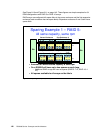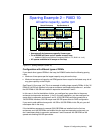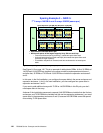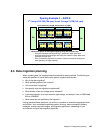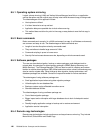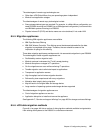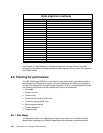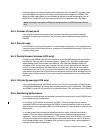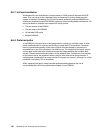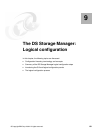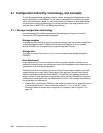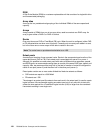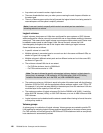
Chapter 8. Configuration planning 149
covering several time intervals, and should include peak I/O rate, peak R/T, and peak (read
and write) MB/sec throughput. Disk Magic will be enhanced to support the DS6000. Disk
Magic provides insight when you are considering deploying remote technologies such as
Metro Mirror. Confer with your sales representative for any assistance with Disk Magic.
8.6.2 Number of host ports
Plan to have an adequate number of host ports and channels to provide the required
bandwidth to support your workload. The ports must also be balanced across the entire
DS6000.
8.6.3 Remote copy
If the DS6000 is a primary disk system in a remote copy configuration, it will consume more
resources, such as fibre channels ports, compared to a standalone disk system. Plan for the
number of fibre ports.
8.6.4 Parallel Access Volumes (z/OS only)
Configuring the DS6000 with PAV will minimize or eliminate IOSQ delays and improve disk
performance. PAV can either be static or dynamic. Dynamic PAV should be implemented
when possible, since this provides more flexibility. z/OS Workload Manager (WLM) will
manage the PAV devices as a group, instead of having a static relationship with the base
device. In a static relationship the base device cannot borrow a PAV device from another
base device that is not in use. In a dynamic environment, idle PAV devices are assigned to
base devices that need more PAV devices to manage the workload. WLM manages the PAV
devices on an LSS group level. Plan for the number of alias devices that your configuration
will need.
8.6.5 I/O priority queuing (z/OS only)
I/O priority queuing allows the DS6000 series to use I/O priority information provided by the
z/OS Workload Manager to manage the processing sequence of I/O operations. This enables
the DS6000 to prioritize I/O workload if, for whatever reason, I/Os are queued in the DS6000.
8.6.6 Monitoring performance
A number of monitoring tools are available to measure the performance of your DS6000 once
it is installed into your configuration.
For example, in the zSeries environment, the RMF™ RAID rank report can be used to
investigate RAID rank saturation when the DS6000 is already installed in your environment.
New counters will be reported by RMF to provide statistics on a volume level for channel and
disk analysis.
In an open system environment the
iostat command is useful to determine whether a
system’s I/O load is balanced or whether a single volume is becoming a performance
bottleneck. The tool reports I/O statistics for TTY devices, disks, and CD-ROMs. It monitors
I/O device throughput and utilization by observing the time the disks are active in relation to
their average transfer rates. The
vmstat utility can also be used to take a quick snapshot or
overview of the system performance.
Note: Disk Magic is available to IBM sales representatives and IBM Business Partners
only.




